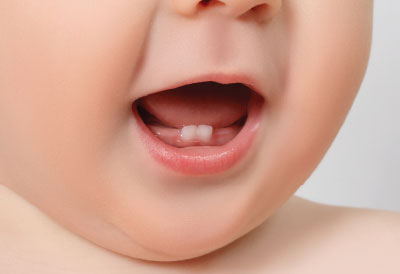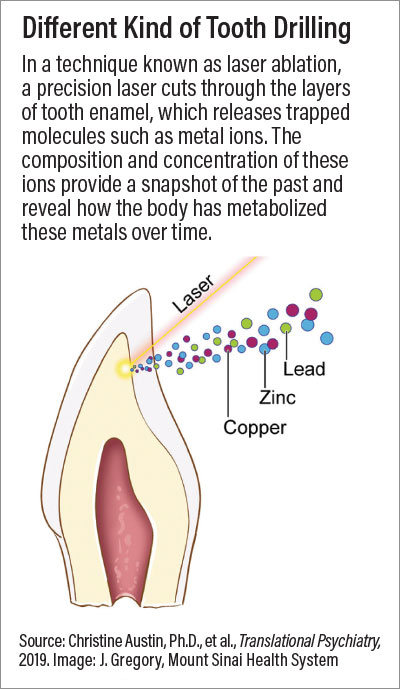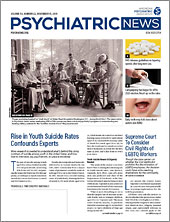The tooth fairy may soon have some competition for unwanted baby teeth: Investigators at the Icahn School of Medicine at Mount Sinai and the Karolinska Institute in Sweden have found that the composition of lead and other metallic elements in the baby teeth of children with autism spectrum disorder (ASD) and/or attention-deficit/hyperactivity disorder (ADHD) differ from those of children without these disorders.
These study findings may help build a bridge between the genetic and environmental factors (such as lead exposure) that can contribute to ASD and/or ADHD, noted study co-author Paul Curtin, Ph.D., an assistant professor of environmental medicine and public health at Mount Sinai. “We are trying to understand the origins of these disorders, and it seems that irregular elemental metabolism may be involved,” Curtin told Psychiatric News.
Elemental metabolism refers to how the human body processes metallic elements—both unwanted pollutants such as lead as well as essential trace nutrients such as copper and zinc.
With the use of precision lasers, the research team cut through baby teeth layer by layer and analyzed the composition of metallic elements at various points along the way. Just like an analysis of tree rings can provide important information about a tree’s history, this analysis of the layers of tooth enamel can provide a snapshot of how metallic elements have been processed by the child over the course of early development. (Though baby teeth do not become visible until about six months of age, they form early in development and start hardening during the second trimester of pregnancy.)
The investigators analyzed baby teeth from 74 Swedish children who were part of a twin study on autism. The participants included 30 twin pairs, one set of triplets, and 11 single children. In this group, 13 children had ADHD, eight had ASD, 12 had both disorders, and 41 did not have either disorder.
The researchers identified several differences in elemental metabolism among these four groups of children. For example, copper and zinc metabolism were significantly altered in children with ASD, whereas children with ADHD had altered metabolism of cobalt, lead, and vanadium.
When combining the metabolic profiles of all 10 elements analyzed, the researchers identified a unique global pattern for each of the four groups.
While Curtin noted analyzing teeth would not be a useful tool for diagnosing the disorders—ADHD and ASD are typically diagnosed before the age most baby teeth start to fall out—the findings may encourage more research into how elemental metabolism affects early development.
He noted that if researchers were to develop animal models with altered metal metabolism and ASD-like and/or ADHD-like symptoms, they might be able to test medications or supplements that can correct the altered metabolism to see if doing so might provide a therapeutic effect.
The study was published September 25 in Translational Psychiatry and was supported in part by the Swedish Research Council, Swedish Brain Foundation, and Stockholm Brain Institute. ■
“Dynamical Properties of Elemental Metabolism Distinguish Attention Deficit Hyperactivity Disorder From Autism Spectrum Disorder” is posted
here.


